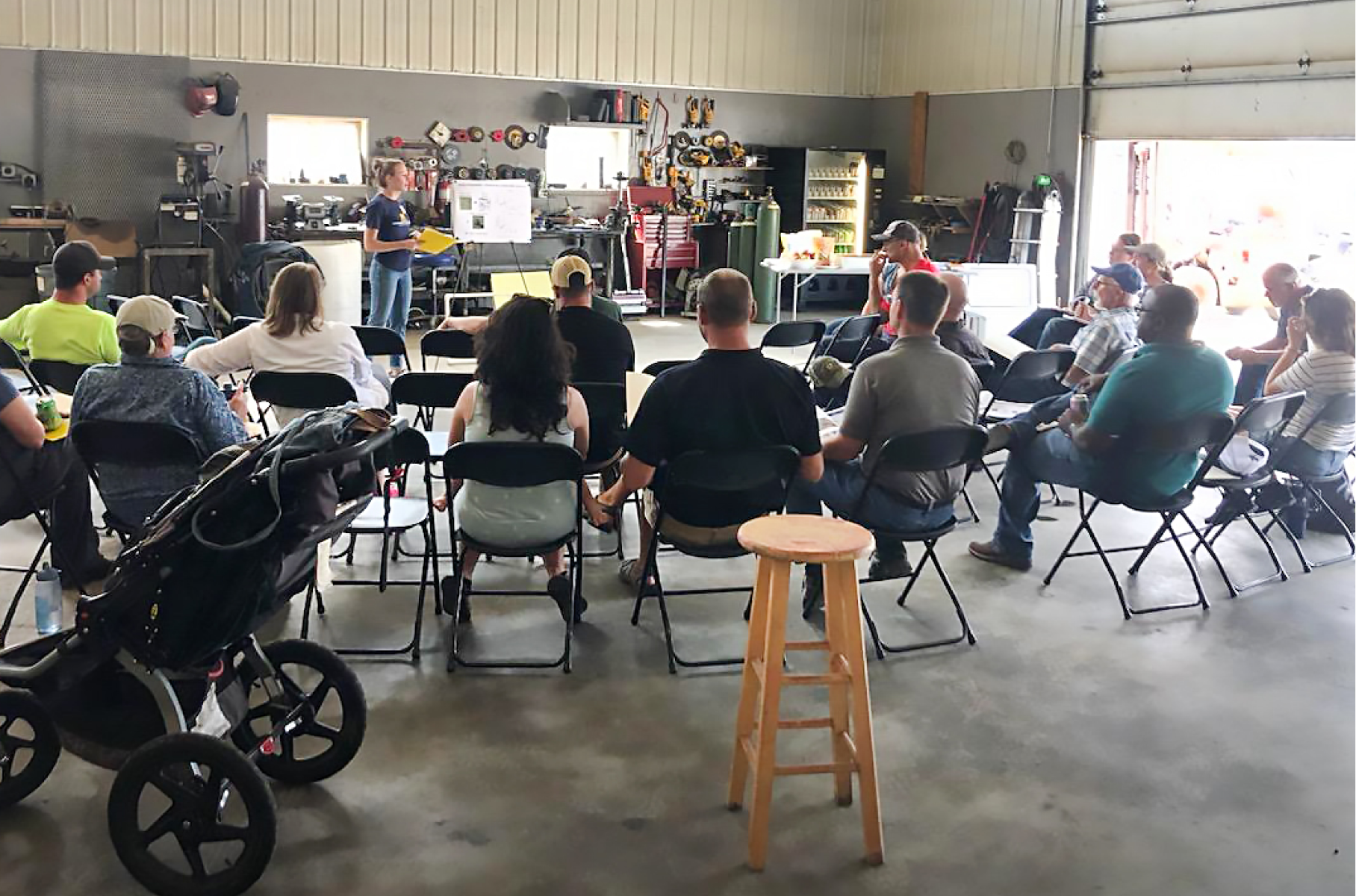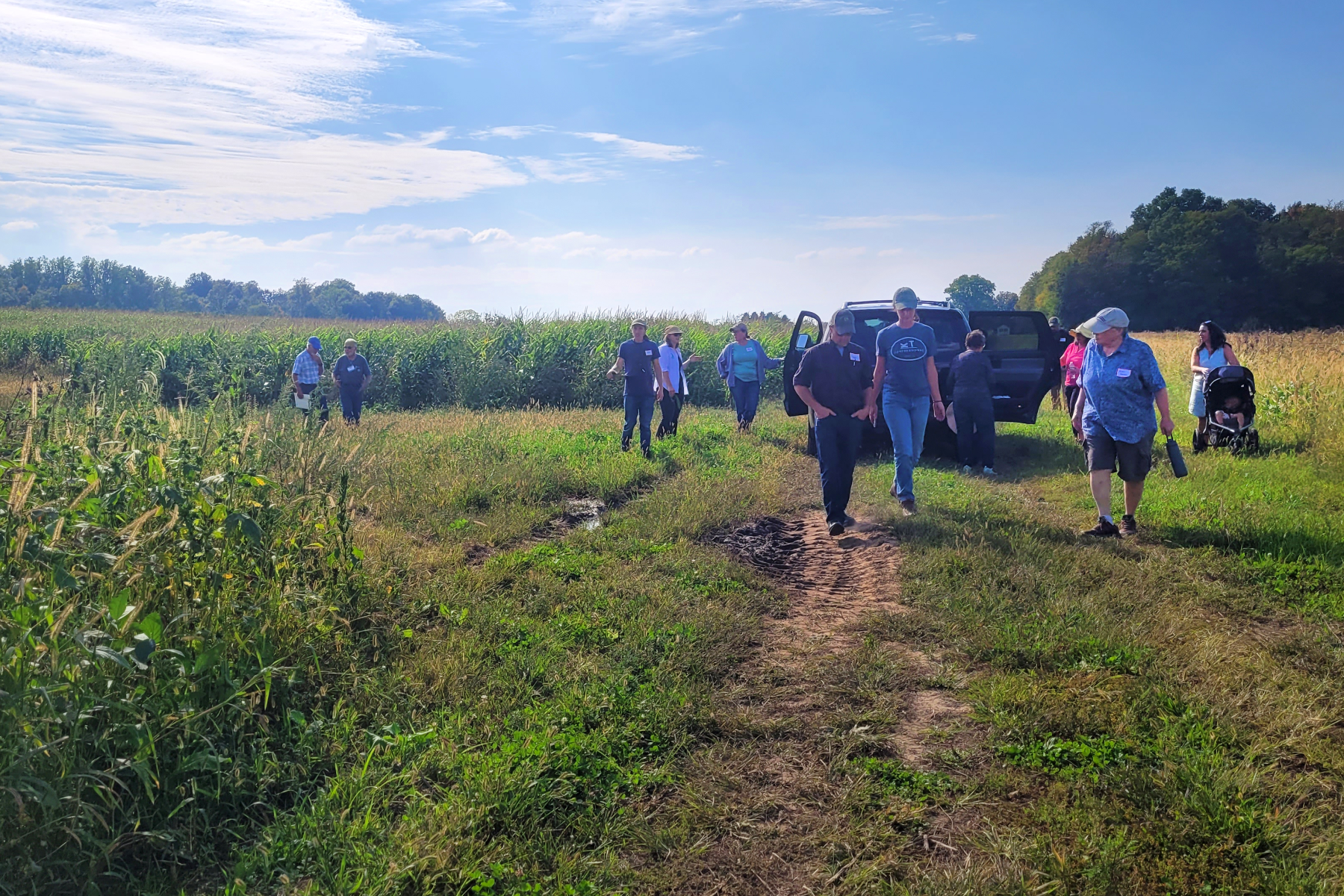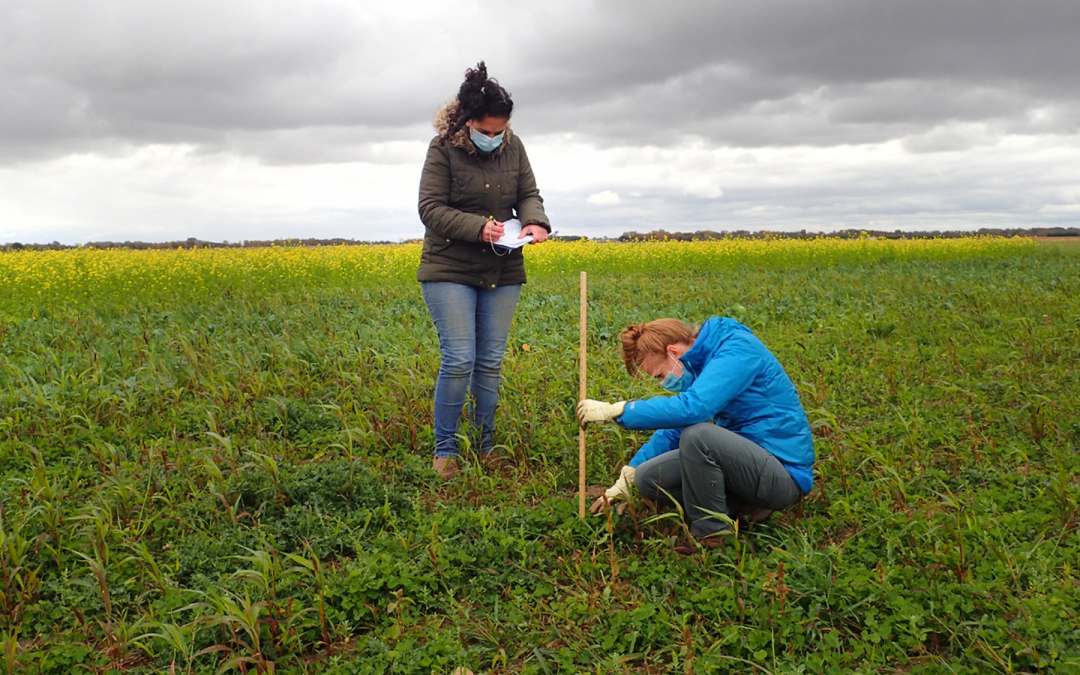Like many Michiganders who grew up surrounded by the largest fresh surface water system on Earth, Etienne Herrick-Sutton feels a deep appreciation for and protective feelings towards the Great Lakes.
“I first came to my research in part because of the harmful algal blooms in Lake Erie,” Herrick-Sutton says. “I think that it’s a problem that we can work together to solve.”
A Rackham student, Ph.D. candidate at the School for Environment and Sustainability, and a 2021 Rackham Public Scholarship Grant recipient, Herrick-Sutton tackles food systems through the lens of applied ecology.
In 2021, she partnered with Michigan Agriculture Advancement, a nonprofit organization committed to supporting farmers in their adoption of conservation practices, to study the effectiveness of cover crops in the Great Lakes region.
According to Herrick-Sutton, cover crops are planted between primary crops in rotations when farmers would otherwise leave the soil bare; in the Midwest, this is usually from mid-fall to mid-spring. Typical cover crops include legumes, grasses, and brassicas, plants in the cabbage and mustard family.
When managed optimally, the benefits of cover crops to farmers and to the environment are many, including erosion control, weed and pest control, and providing a pollinator habitat. Additionally, when incorporated back into the soil at the end of a growing season, cover crops help sequester carbon, bringing it back into the soil to increase organic matter and make the fields more productive, with the added benefit of mitigating climate change.
“Cover crops also help retain nutrients in the soil so that they don’t leach or run off into our water, which can lead to harmful algal blooms in our lakes and water systems,” Herrick-Sutton says.
Growing Better Understandings

As part of her public scholarship research, Herrick-Sutton hosted field days with farmers to discuss the project and sustainable agriculture in general.
As much as Herrick-Sutton believes in the power of cover crops to address environmental issues and provide benefits to farmers, she is frustrated by the oversimplification that cover cropping receives in the media, often offered as a quick fix to a complex problem.
“It’s true that there’s a lot of potential for practices like cover cropping to help address climate change and improve farm resilience, but we also really need to take the time to do what we can as scientists and scholars to support farmers aiming to use those practices successfully,” such as providing them with science-based resources and technical assistance Herrick-Sutton says.
Through her partnership with Michigan Agriculture Advancement, Herrick-Sutton recruited over 100 farmers in the Great Lakes region—Minnesota, Wisconsin, Illinois, Ohio, Indiana, and Michigan—to gather data on cover crop biomass, which is a key indicator of many of the benefits cover crops provide. The group was interested in evaluating the success of cover cropping, using biomass as a proxy for performance, and identifying strategies for improving both its environmental and economic outcomes.
“A farm is a business, and if farmers are going to try a new practice, unless they know that it’s not going to hurt their bottom line, they might not be comfortable giving it a try,” Herrick-Sutton says.
Complex Problems, Farmer-Led Solutions
Using a citizen science approach, Herrick-Sutton developed and trained farmers on a simple protocol for estimating cover crop biomass in their fields using farmer-submitted field photos and crop height measurements. This, combined with a web-based survey to better understand their land management practices, helped Herrick-Sutton understand which management approaches led to more or less cover crop biomass.
Most of the farmers—growers of conventional row crops like corn, soybeans, or wheat—connected with Herrick-Sutton through an interest form that she and Michigan Agriculture Advancement shared with the agricultural community. Some called her, attended webinars, or agreed to join the project after an in-person farm visit.
“We also had field days, where farmers would come out and we’d have conversations about the project and about sustainable agriculture in general,” Herrick-Sutton says.
The relationships built with the farmers has led to information sharing that is beyond anything that data-collection alone could capture.
“Sometimes I will get a call from a farmer who wants to chat about this new cover crop mixture they’re trying or a new hypothesis for why the soil in one field looks better than in another. That’s really exciting. I’m learning so much from them,” Herrick-Sutton says.
Cultivating Bounty

In partnership with Michigan Agriculture Advancement, Herrick-Sutton used a citizen science approach, training farmers on a simple protocol for estimating cover crop biomass in their fields.
Herrick-Sutton’s research has revealed that increasing the adoption of cover crops isn’t enough.
“The data we collected revealed tremendous variation in cover crop biomass across all of the farmers’ fields, meaning that there’s still a lot of work to do in terms of making sure that farmers are producing enough cover crop biomass to actually get meaningful benefits,” Herrick-Sutton says.
Ideally, farmers are yielding a baseline of a thousand kilograms of cover crop biomass per hectare to ensure a true return on their cover crop investment. Herrick-Sutton’s research suggests that only 32 percent of farmers who chose to grow cereal rye, the most popular cover crop in the Great Lakes region, met that threshold.
“We also found that there are a lot of farmers using creative ways to extend that cover crop growing window, which is one of the most important ways to get more biomass,” Herrick-Sutton says.
Creative tactics include the incorporation of “intercropping,” essentially planting cover crops in between the rows of their cash crops, and “planting green,” the practice of allowing cover crops to grow longer in the spring and planting the cash crop directly into the cover crops, going back in later to terminate the cover crop once the cash crop is more established.
One of the most exciting results, according to Herrick-Sutton, is cover crop diversity. “Cover crop mixtures that contained multiple species produced roughly twice as much biomass on average as something like cereal rye that only has one species growing,” she says.
This is in part because farmers who plant cover crop mixtures also tend to plant more diverse cash crop rotations, which provide longer windows for different types of cover crop species to flourish.
“I was chatting with one farmer recently who has been super innovative,” Herrick-Sutton says. “He’s looking at plant diversity through the lens of different cultivars and varieties, which involves diversity within a species, rather than just between species. I’m constantly learning new things from these farmers, and so it’s just a really dynamic way to do research.”
How Rackham Helps
Herrick-Sutton calls the Public Scholarship Grant “one of the best things that happened” to her during grad school.
“The project is now the cornerstone of my dissertation, and it’s really been the most rewarding part of my grad school experience,” she says. “I basically owe all of my current job prospects to the experiences and the people I met through this project. ”

